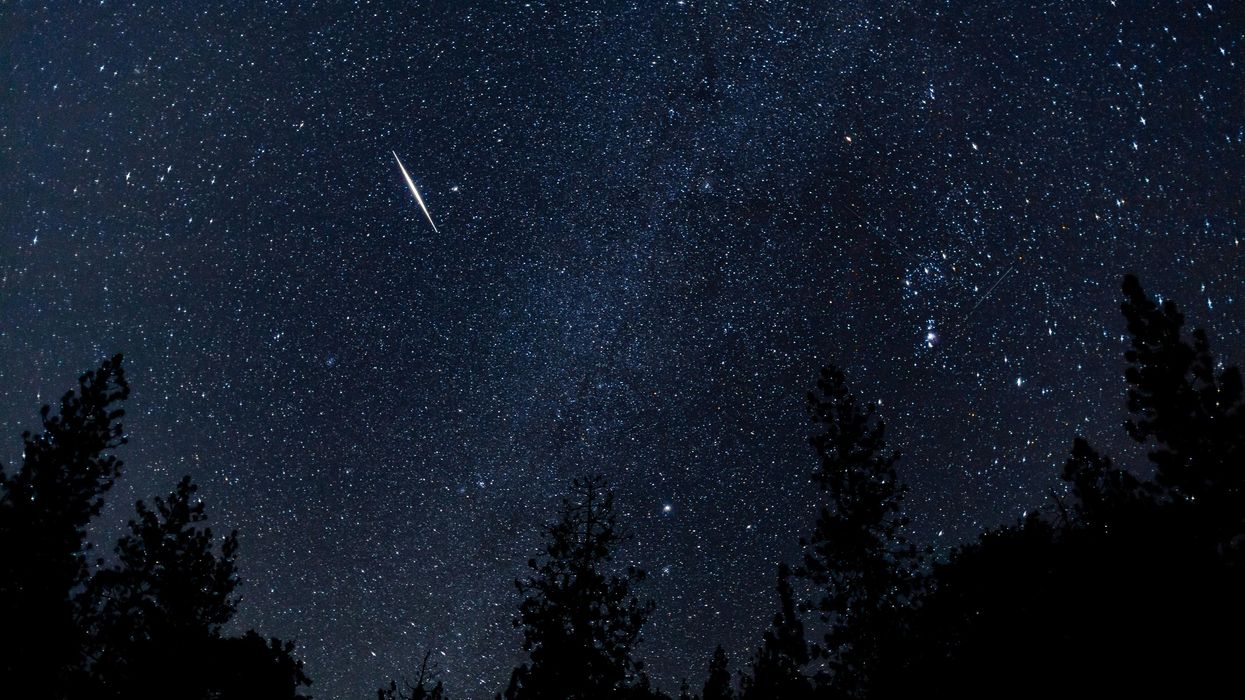A Dazzling Meteor Shower Will Be Visible From Canada This Month & Here's How To See It
It'll light up the skies before Halloween!

The Orionids Meteor shower.
Keep your eyes on the skies! A beautiful meteor shower will be visible from Canada this month and you won't want to miss it.
The Orionids meteor shower will light up the skies this October, the second of two yearly meteor showers from Halley's Comet.
According to NASA's Jet Propulsion Laboratory, the meteor shower will be active throughout October and November but will peak on the night of October 20, 2022.
The Orionid meteors are made up of debris from Halley's Comet, which last visited Earth in 1986 and isn't set to return until 2061, according to the Farmers' Almanac.
However, Earth passes close to the comet's orbit around mid-October each year, each time encountering the dust and debris left by Halley, which ram into the planet's atmosphere and create "the effect of a 'shooting star' in our sky."
The name "Orionids" comes from the way the meteors appear to come from the constellation Orion.
The Orionids meteor shower, which is known for the meteors' brightness and speed, is said to be one of the most beautiful meteor showers of the year. At its peak, the event can produce up to 20 meteors per hour.
How to watch the Orionids meteor shower
The meteors will be visible in both the Northern and Southern Hemispheres in the hours before dawn.
To catch the starry show, NASA says you'll want to find a dark place away from city lights and lie on your back, facing southeast if you're in the Northern Hemisphere or northeast if you're in the Southern Hemisphere.
You can easily see the meteors with the naked eye, so you won't need to bring a telescope or any other equipment.
The meteors will be framed by some of the brightest stars in the sky, like Betelgeuse and the Dog Star Sirius, as well as winter constellations like Orion, Gemini and Taurus, which should make for a pretty spectacular display.
The best time to view the Orionids is said to be predawn, around 4 or 5 a.m. Though its peak will occur in mid-October, the meteor shower will still be visible until November 22, according to the American Meteor Society.
October will see other celestial events like a Full Hunter's Moon on October 9, which also marks the end of Mercury retrograde (a welcome date for those who follow astrology), as well as the Draconids meteor shower, which will peak on the same night after the full moon.
This article's cover image was used for illustrative purposes only.
- Mercury Retrograde Is Here & This Is What Not To Do, According To ... ›
- These Canadian Cities Were Ranked As The Best Spots For ... ›
- Jupiter Will Be The Brightest It's Been In 59 Years Tonight & You ... ›
- The Orionid Meteor Shower Will Be Visible From Ontario This Month & Here Are The Best Spots - Narcity ›
- Two Dazzling Meteor Showers Will Be Visible Canada This Month & Here's How To Spot Them - Narcity ›
